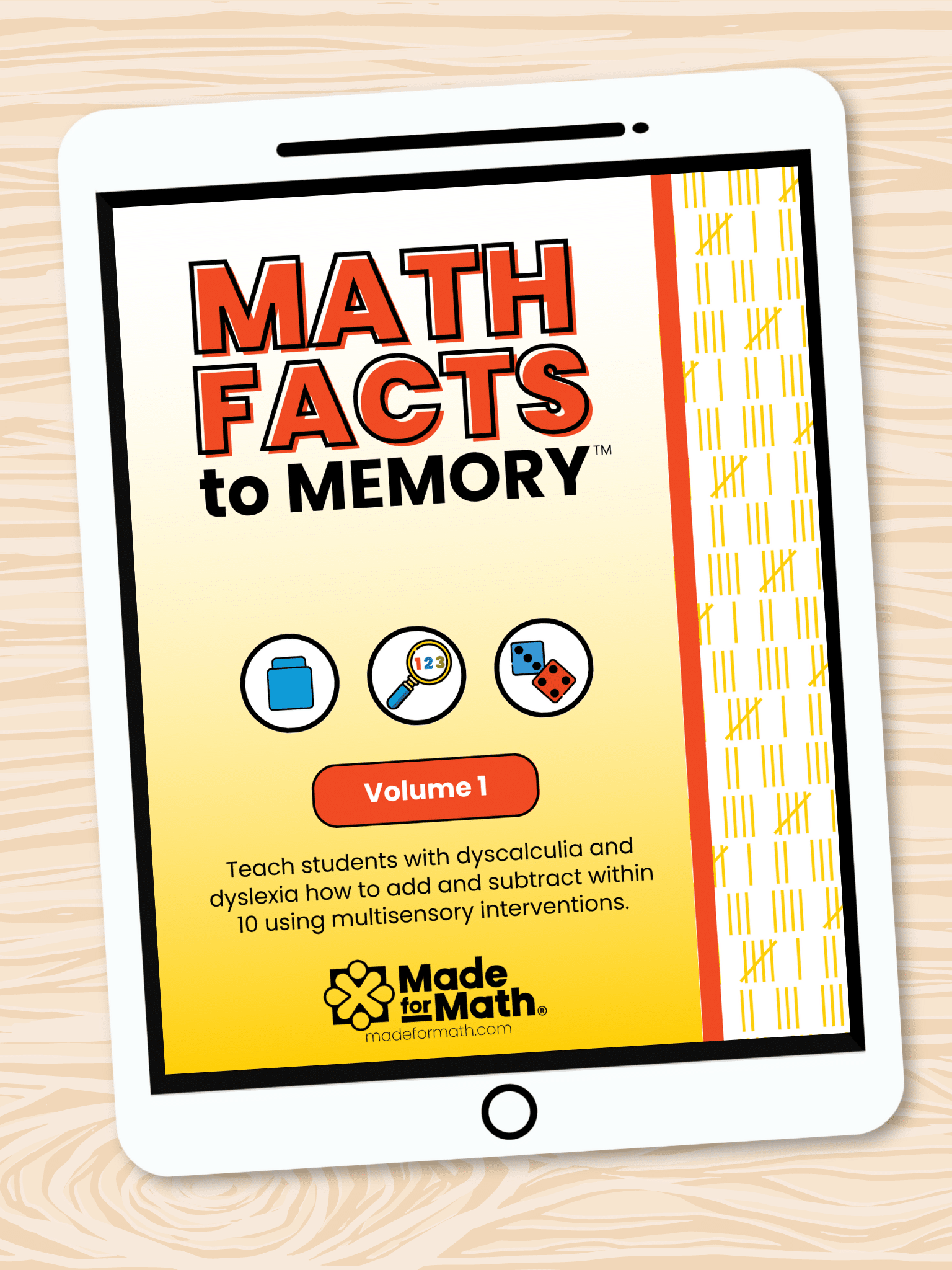MATH FACTS: The Problem with Flash Cards and 5 Ways to Help
In the seventh grade classroom, parents filled every seat and stood along the walls too as I listened to my son’s teacher explain classroom policies. As I scanned the room, I could see looks of concern on parent’s faces as they squirmed in their seat waiting for her to pause for questions.
Hands shot up into the air with rapid fire questions about their struggling child.
- “My son is failing math class. What can we do at home?”
- “Where are the textbooks? Why doesn’t anyone use textbooks anymore?”
Next, she mentioned a common problem most middle school teachers face, math fact memorization.
More than half of her students have NOT mastered their math facts. (These are 7th graders folks!)
We’re not talking about multiplication facts only here but ALL the facts from basic addition to division facts.
This teacher knows that getting math facts solidified in your head is like learning your alphabet letters. They are the very foundation for all mathematical learning. Without the ability to recall math facts quickly, your child will have a tough time making room for new information.
Someone blurted out the obvious question, “What can we do to help them with memorizing their math facts?”
I shifted from leaning against the bookcase in anticipation and cringed a little as I listened to her suggestions:
Daily practice and flash cards
My eyes darted over to the parent that asked the question, her face said it all.
Rote memorization has been the go-to method for many years along with tricks with fingers, songs, timed tests, and the like. It works for a select few kids, but for a large population of students, flash cards are failing them because it doesn’t draw upon the way the brain learns, which is through the senses.
The problem with flash cards… they are abstract.
Most math fact instruction is INTRODUCED through using just numerals. For example, the numeral 5 is a symbol for the quantity of five. Introducing students to math facts without any meaning such as what five looks and feels like, we are leaving them with rote memorization as their only tool. The brain is prone to pruning these facts because they lack meaning.
When the brain is making sense of quantity, it needs to move from concrete, to representational, to abstract.
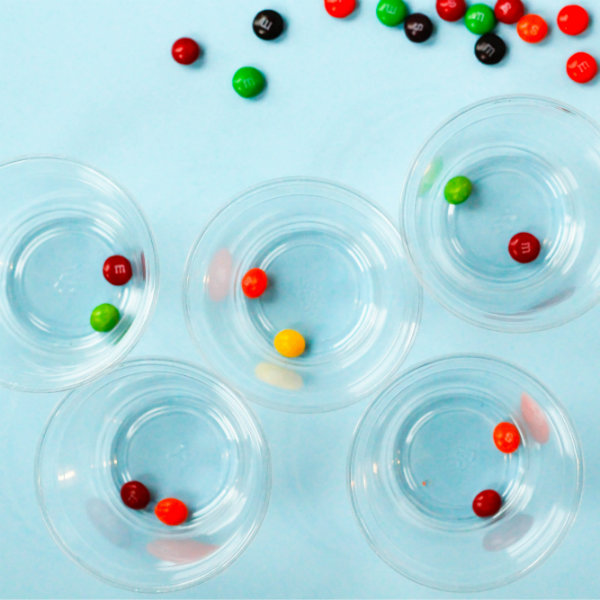
Phase 1: Concrete
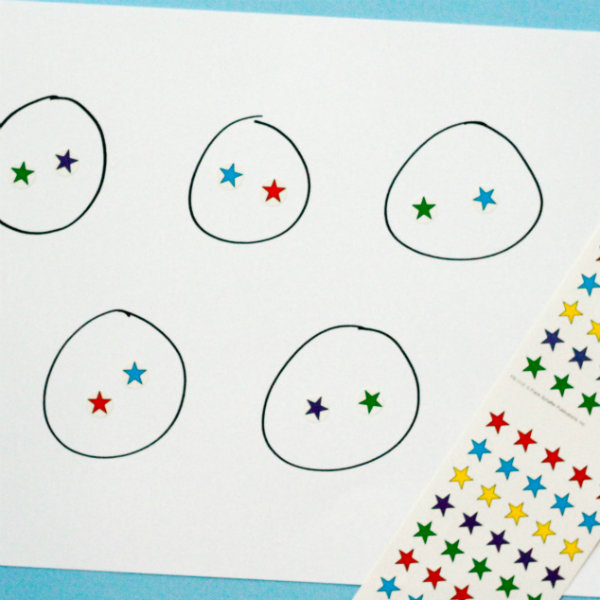
Phase 2: Representational
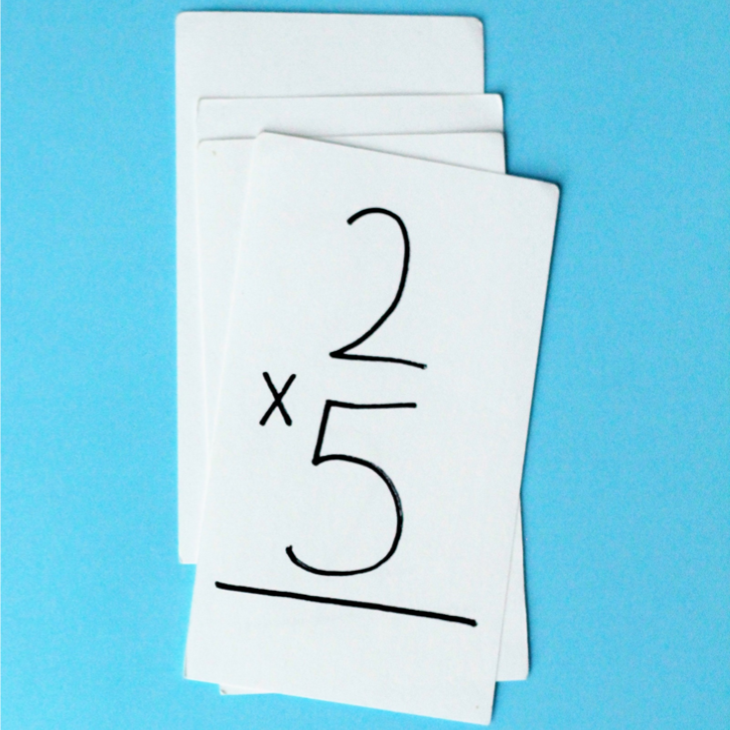
Phase 3: Abstract
This is why flashcards fail. They start with the abstract instead of building up to it.
What’s happening in the brain when students solve math problems?
Different parts of the brain are used for math problem solving when compared to retrieval of math facts. Brain imaging studies suggest that math calculations rely on an interaction between parts of the brain that process quantity, visual information, and verbal representations of numbers (Frith and Blakemore, 2005).
However, rote math fact calculations (ie: flashcards) are performed largely using the verbal system possibly because math facts are typically taught through rote, verbal memorization.
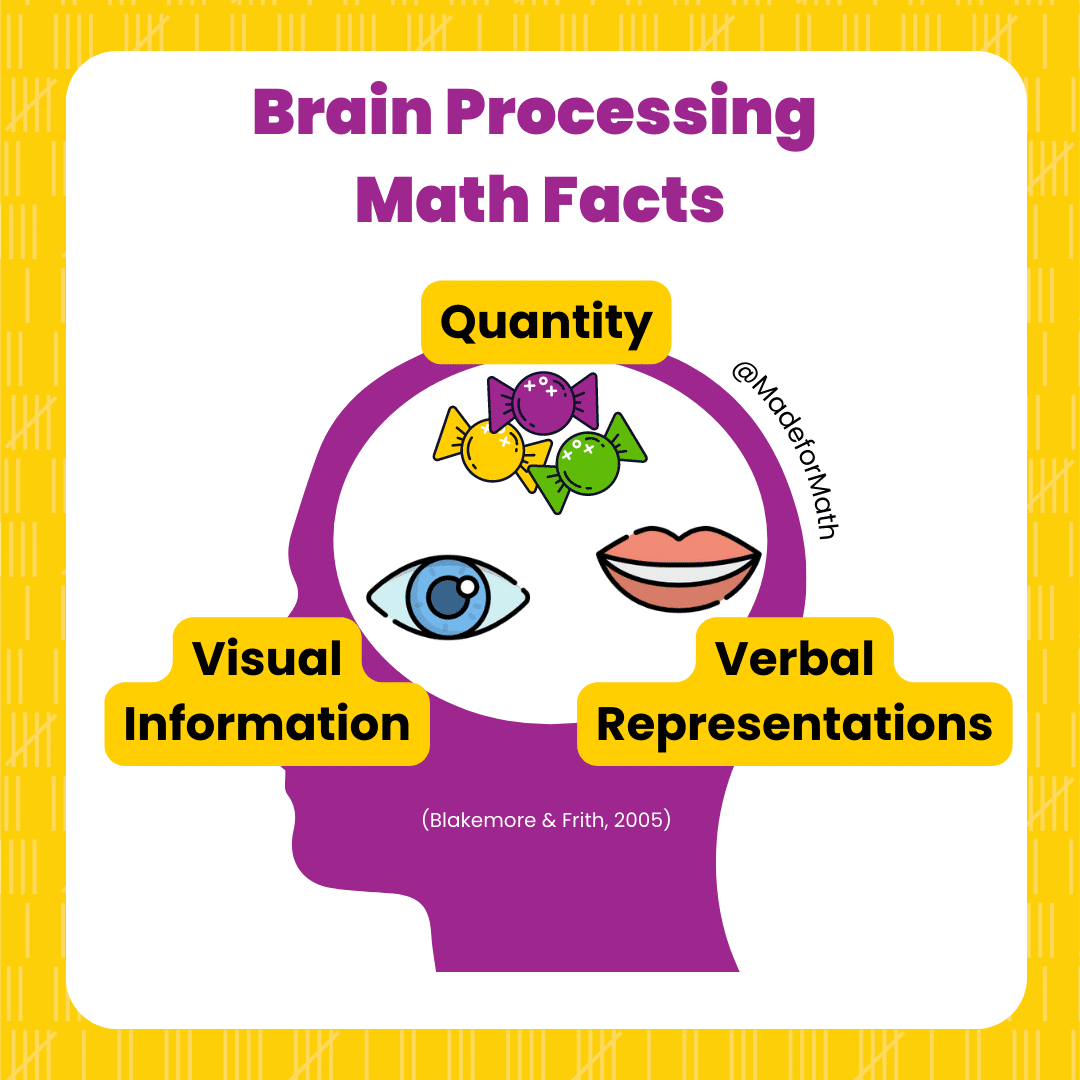
Why are math facts so hard for students with dyslexia?
Since math fact retrieval utilizes the verbal system, we can see why these students are also likely to struggle with math facts. Recalling math facts is a matter of word retrieval, which is an area of weakness for many dyslexic students (Shaywitz, 2020).
However, it should be noted that these students may not have as much difficulty with math reasoning due to the many parts of the brain involved in math problem solving compared to math fact recall alone. In other words, being “bad at math facts” does not equate to being “bad at math.”
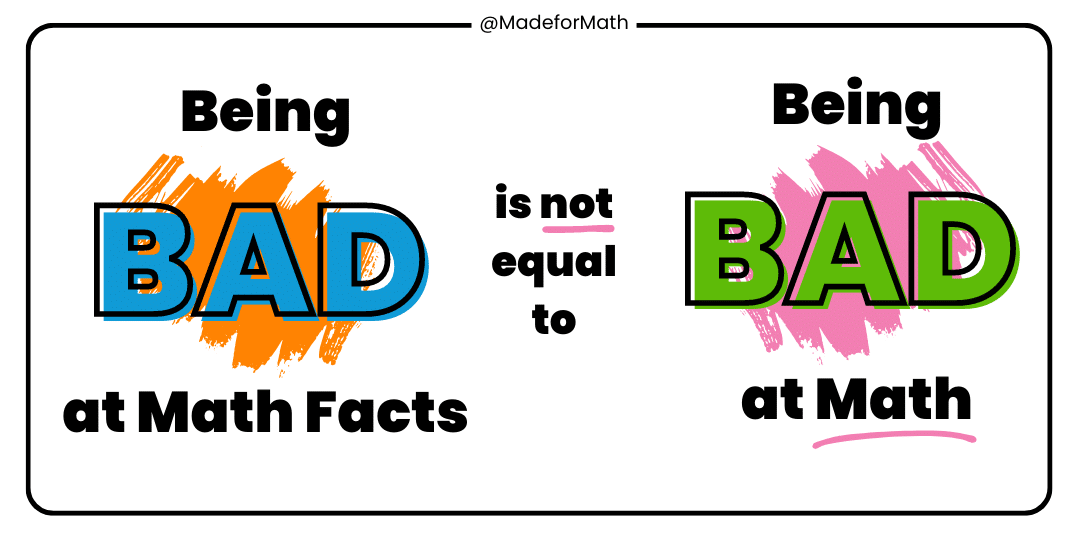
How to Help Kids Master Math Facts Once and For All
Introduce Math Facts Using Hands-On Instruction
Learning begins with gaining attention and the senses. When we tap into a hands-on experience, we are increasing the likelihood that the student will be able to make stronger connections between the quantity, the numeral, in addition to the verbal input of the math fact.
Use items that you can feel in your hands, like playdough, stickers, and blocks. They have weight and shape to them. These are the very methods that are going to help your child master her math facts. To learn more in-depth about using manipulatives and explicit instruction, be sure to check out our digital book:
Math Facts to Memory Vol 1 (only $35 – cheaper than dinner out!)
Narrow the Math Facts
Students that have dyslexia and dyscalculia are particularly sensitive to things having meaning. Rote memorization triggers the giant “USELESS” flag to these students.
To combat this, narrow the facts you work with. Instead of doing all of the addends of 10, start with learning how to add up to four (1 + 3, 3 + 1, 2 + 2, etc). Once all the addends of four can be recalled in three seconds or less, move onto adding up to five.
Incorporate these narrowed facts into other math classwork. For example, all of our students have what we call “Focus Facts”. These are a set of four math facts they are working on mastering. Every practice problem is using these facts. If the student is learning about fractions, all of their problems would involve adding within four (¼ +¾) Again, this gives them meaning and use. The repetition is delicious to their brain.
Apply Subitizing in Math Fact Instruction
Subtizing means “to see suddenly”. These are patterns of 4-6 that help students visualize the quantity quickly. They can be in the format of tally marks or dice patterns. Subitize the hands-on materials to tap into more visual information for students.

Touch and Say the Math Facts (or Write and Say the Math Facts)
When students have hands-on materials in front of them, have the students touch and say the fact. This helps tie the quantity to the verbal while also giving a rich sensory experience. Also incorporate having students write and say the facts as well. “When the hands are doing, the brain is learning.” – Marilyn Zecher
Provide a Math Facts Near-Point Reference
Near-point reference is a fancy way of saying provide a “cheat sheet”. This can be a hundreds or multiplication chart but it can also be Unifix cubes, a Reknrek, a beaded numerline, or craft sticks! These references allow working memory to be freed up to recall other important information like the steps for division.
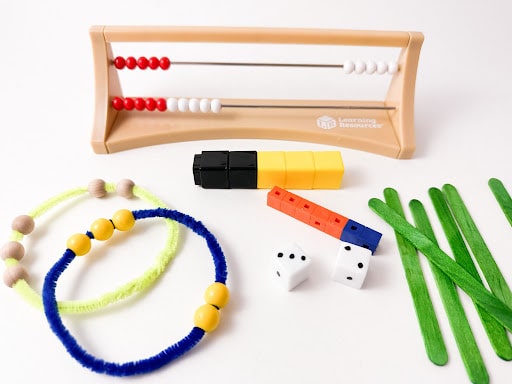
A Note for All the “Been There, Done That” Parents and Teachers
Keep in mind that having total mastery of all math facts may not happen. Many adults cannot quickly tell you that 8 x 7 is 56. But you can gain sufficient skills to be proficient in math. One reason for this is how math facts were introduced and many students need to start at the beginning by adding/subtracting within 10.
Are You Looking for a Better Way to Teach Math Facts?
Check Out Math Facts to Memory™ Vol 1 (DIGITAL ONLY)
Stop wasting your time with flashcards and rote memorization for students that learn differently. Discover the power of multisensory techniques in math fact instruction.
Over 40 lessons covering adding and subtracting within 10
- Explicit instruction for both YOU and the student
- Specific language to enhance learning
- Math vocabulary pages featuring morphology and gross motor movement
- Student practice sheets
- Games to practice math facts
Math Facts to Memory™ Volume 1 is appropriate for all learners but is essential for those with dyslexia and dyscalculia.
Grab your copy for just $35.
Updates for the life of the product!
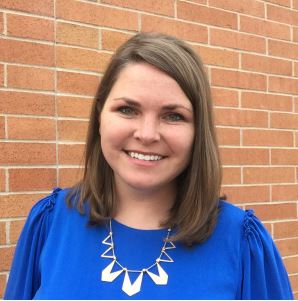
Adrianne Meldrum
CEO
is the Founder and CEO of MFM. She is a certified teacher with over a decade of experience tutoring middle and high school students in math. Adrianne’s goal is to bring multisensory math to as many students as possible.


